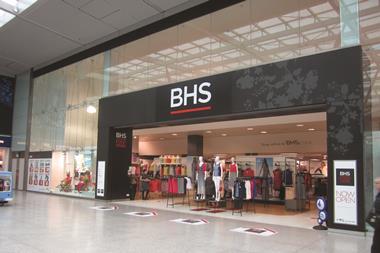- Retail Acquisitions’ Dominic Chappell sold BHS’s distribution centre in Warwickshire
- Chappell used £5m of the proceeds to pay off a loan he had taken out to acquire BHS
- Financial transaction was not illegal, but raises questions over how the business was run
- BHS slumped into administration last month with a £571m pension deficit
BHS’s owner sold the retailer’s main distribution centre and used some of the proceeds to pay off a loan used to buy the business.
Dominic Chappell of Retail Acquisitions, which purchased the beleaguered department store business for £1 from Sir Philip Green a year ago, rubber-stamped a move to sell BHS’s warehouse in Atherstone, Warwickshire, for £15m last August.
It has emerged that £5m of that cash was then paid directly to Chappell’s consortium as an inter-company loan.
Retail Acquisitions used the funds to pay off a loan it had taken out with Allied Commercial Exporters (ACE), according to The Guardian.
ACE is understood to have taken the distribution centre as security for the loan, which was taken out on the day Retail Acquisitions bought BHS last March.
According to documents filed at Companies House, the loan was settled on September 1 last year, less than a week after the Atherstone site was sold.
News of the sale of the warehouse and the cash transaction, which is not illegal, emerged after at least five bidders tabled offers for the department store chain ahead of yesterday’s deadline for indicative offers.
Details of interested parties have not been disclosed by administrators, but are understood to comprise some interested in the whole of the business and some only in parts.
Ikea and B&M are thought to be eyeing chunks of the BHS portfolio, while Sports Direct boss Mike Ashley has claimed he would keep all of the embattled retailer’s 164 stores open and would not make any redundancies if he pulled off a shock swoop for the firm.
BHS collapsed into administration last month, days after Retail Week revealed the 88-year-old retailer was on the brink of collapse.
Its demise put 11,000 jobs at risk and left a £571m black hole in its pension scheme, sparking interventions from a number of authorities, including parliament’s Work and Pensions Committee, the Business, Innovation and Skills Committee and The Insolvency Service.

























No comments yet